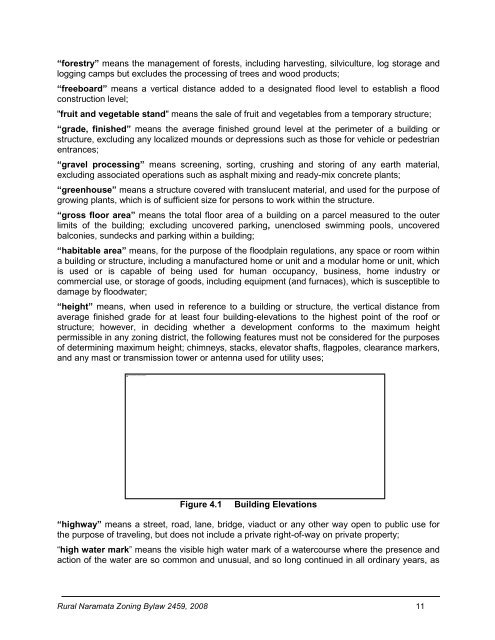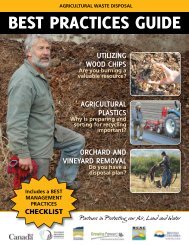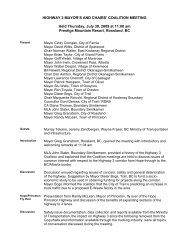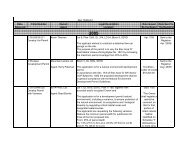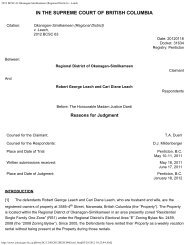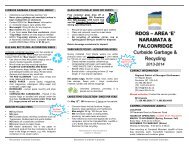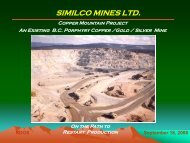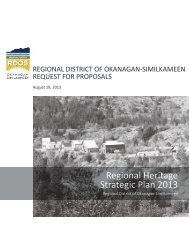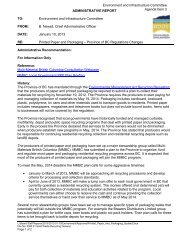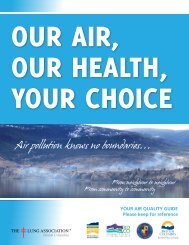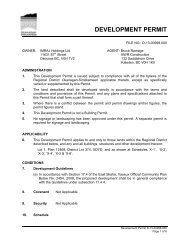Naramata Zoning Bylaw No. 2459, 2008 - Rdosmaps.bc.ca
Naramata Zoning Bylaw No. 2459, 2008 - Rdosmaps.bc.ca
Naramata Zoning Bylaw No. 2459, 2008 - Rdosmaps.bc.ca
You also want an ePaper? Increase the reach of your titles
YUMPU automatically turns print PDFs into web optimized ePapers that Google loves.
This image <strong>ca</strong>nnot currently be displayed.<br />
“forestry” means the management of forests, including harvesting, silviculture, log storage and<br />
logging <strong>ca</strong>mps but excludes the processing of trees and wood products;<br />
“freeboard” means a verti<strong>ca</strong>l distance added to a designated flood level to establish a flood<br />
construction level;<br />
"fruit and vegetable stand" means the sale of fruit and vegetables from a temporary structure;<br />
“grade, finished” means the average finished ground level at the perimeter of a building or<br />
structure, excluding any lo<strong>ca</strong>lized mounds or depressions such as those for vehicle or pedestrian<br />
entrances;<br />
“gravel processing” means screening, sorting, crushing and storing of any earth material,<br />
excluding associated operations such as asphalt mixing and ready-mix concrete plants;<br />
“greenhouse” means a structure covered with translucent material, and used for the purpose of<br />
growing plants, which is of sufficient size for persons to work within the structure.<br />
“gross floor area” means the total floor area of a building on a parcel measured to the outer<br />
limits of the building; excluding uncovered parking, unenclosed swimming pools, uncovered<br />
balconies, sundecks and parking within a building;<br />
“habitable area” means, for the purpose of the floodplain regulations, any space or room within<br />
a building or structure, including a manufactured home or unit and a modular home or unit, which<br />
is used or is <strong>ca</strong>pable of being used for human occupancy, business, home industry or<br />
commercial use, or storage of goods, including equipment (and furnaces), which is susceptible to<br />
damage by floodwater;<br />
“height” means, when used in reference to a building or structure, the verti<strong>ca</strong>l distance from<br />
average finished grade for at least four building-elevations to the highest point of the roof or<br />
structure; however, in deciding whether a development conforms to the maximum height<br />
permissible in any zoning district, the following features must not be considered for the purposes<br />
of determining maximum height; chimneys, stacks, elevator shafts, flagpoles, clearance markers,<br />
and any mast or transmission tower or antenna used for utility uses;<br />
Figure 4.1<br />
Building Elevations<br />
“highway” means a street, road, lane, bridge, viaduct or any other way open to public use for<br />
the purpose of traveling, but does not include a private right-of-way on private property;<br />
“high water mark” means the visible high water mark of a watercourse where the presence and<br />
action of the water are so common and unusual, and so long continued in all ordinary years, as<br />
Rural <strong>Naramata</strong> <strong>Zoning</strong> <strong>Bylaw</strong> <strong>2459</strong>, <strong>2008</strong> 11


